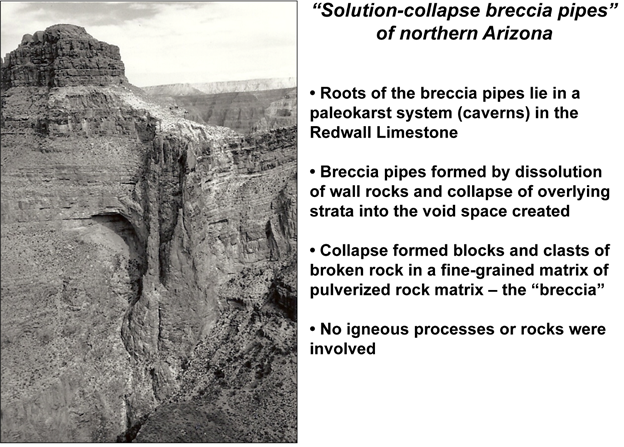The uranium ore deposits in the breccia pipes of the Grand Canyon region are unusual, perhaps unique, and their genesis (processes that created them) remains mostly speculative. This study provides an opportunity to piece together a scientific puzzle, a model that explains their step-by-step creation. Constructing this model is not only an academic exercise but can also assist in the management of federal lands by improving understanding of where and why deposits can occur in the region. This allows land management agencies to plan for areas that have the potential for future exploration, discovery, and mining.
Objectives
Study several aspects of the breccia pipes of northern Arizona and their ore deposits to build a logical model that explains their formation, including the consideration of:

Photo credit: Karen Wenrich, USGS
Ongoing
Task 1: Distribution and stratigraphic positions of breccia pipes Task 2: Estimate the number of mineralized breccia pipes Task 4: Compare breccia pipe to sandstone deposits
1
Barton, I.F., Barton, M.D., and Van Gosen, B.S., 2021, U-Pb age determinations of uraninite by electron microprobe analyses of ore samples from two solution-collapse breccia pipe uranium deposits, Grand Canyon region, northwest Arizona, USA: U.S. Geological Survey data release, https://doi.org/10.5066/P95CPDAD.
Bradley S. Van Gosen
Geologist
Central Mineral Resources Team
303.236.1566
bvangose@usgs.gov
| Energy Fuels Incorporated |
